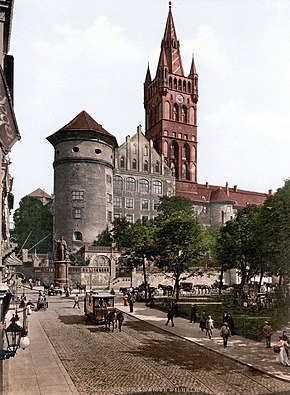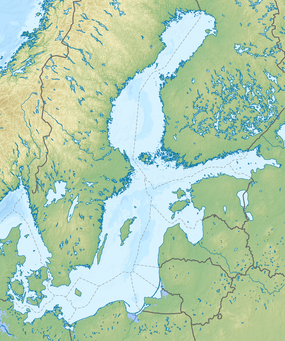Konigsberg
| Königsberg in Prussia | |

Königsberg Castle before World War I
|
|
|
Königsberg was a port city on the south eastern corner of the Baltic Sea. It is today known as Kaliningrad.
|
|
| Coordinates | 54°43′00″N 20°31′00″E / 54.71667°N 20.51667°ECoordinates: 54°43′00″N 20°31′00″E / 54.71667°N 20.51667°E |
|---|---|
| History | |
| Founded | 1255 |
| Abandoned | 1945 |
| Associated with | Sambians, Germans, Poles, Jews, Lithuanians |
| Events | World War II |
| Site notes | |
| Ownership | Russia |
Königsberg is the former German name of Kaliningrad. Originally a Sambian, or Old Prussian it later belonged to monastic state of the Teutonic Knights , the Duchy of Prussia, the Kingdom of Prussia,Russian Empire and Germany until 1946. After being largely destroyed in World War II by Allied Forces and then annexed by the Soviet Union thereafter, the city was renamed Kaliningrad, and few traces of the former Königsberg remain today. The literal meaning of Königsberg is 'King’s Mountain'. In the local Low German dialect, spoken by many of its German former inhabitants, the name was Kenigsbarg (pronounced [ˈkʰeːnɪçsbarç]). Further names included Russian: Кёнигсберг,Королевец, tr. Kyonigsberg, Old Prussian: Kunnegsgarbs, Knigsberg, Lithuanian: Karaliaučius and Polish: Królewiec.
Königsberg was founded in 1255 on the site of the ancient Old Prussian settlement Twangste by the Teutonic Knights during the Northern Crusades, and was named in honour of King Ottokar II of Bohemia. A Baltic port, the city successively became the capital of their monastic state, the Duchy of Prussia (1525-1701) and East Prussia (until 1945). Königsberg remained the coronation city of the Prussian monarchy though the capital was moved to Berlin in 1701. It was the easternmost large city in Germany until it was captured by the Soviet Union on 9 April 1945, near the end of World War II.
...
Wikipedia

